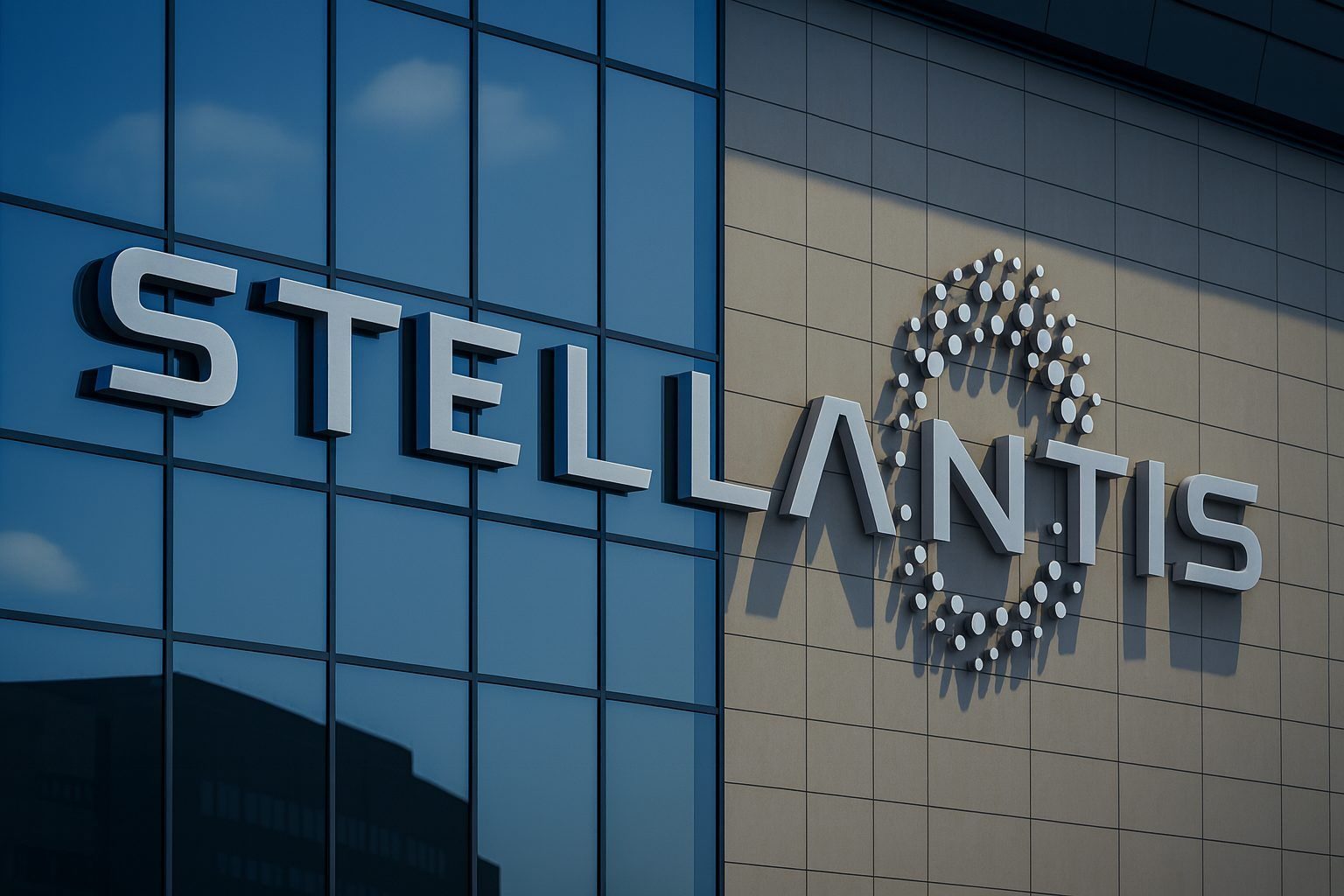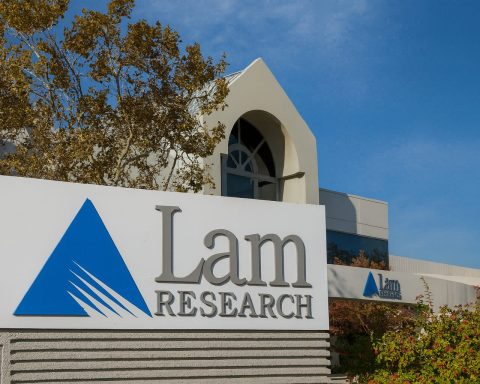Stellantis N.V. (NYSE: STLA) shares are trading firmly higher on Tuesday, even as Wall Street sends mixed messages on the automaker’s turnaround story.
By early afternoon on November 25, 2025, STLA was changing hands around $10.52, up roughly 3.8% on the day. The stock has traded between $10.04 and $10.57 intraday, on volume of about 14 million shares, putting it well above its usual trading activity.
The move pushes Stellantis through a closely watched technical threshold: its 200‑day moving average, which sits near $10.38. According to a note published by BNK Invest on Nasdaq, STLA crossed above that line earlier today, a signal many chart-watchers interpret as a potential shift from a downtrend to a more constructive phase. [1]
At the same time, the fundamental backdrop is anything but simple: the stock is rebounding from a year of heavy charges and recalls, a new “Sell” rating landed this morning, and yet Stellantis is committing billions to U.S. and South American manufacturing and EV infrastructure.
Key Takeaways on STLA Stock Today
- Price action: STLA is up about 3.8% to $10.52, moving above its 200-day moving average near $10.38 in Tuesday trading. [2]
- Mixed analyst signals: Wall Street Zen downgraded Stellantis from “Hold” to “Sell” today, while Goldman Sachs just initiated coverage at “Neutral” with a $10 price target. [3]
- Fundamentals under pressure: Stellantis posted a net loss of €2.3 billion in H1 2025 and reported a sizable EPS miss in the most recent quarter, largely due to restructuring and product-related charges. [4]
- Big capital spending: Management is leaning into a $13 billion U.S. investment program and a €5.6 billion plan for South America, while also signing on to Tesla’s Supercharger network to support its EV rollout. [5]
- Income appeal with caveats: Stellantis paid a €0.68 ($0.77) per-share dividend earlier this year — a trailing yield of about 7.4% at today’s price — but analysts expect that payout to come down. [6]
STLA Stock Today: Price, Range and Basic Stats
At roughly $10.52, STLA sits in the lower half of its 52‑week range of about $8.39 to $14.28. [7] That leaves the shares still down sharply from their 2023–2024 peaks, even after today’s bounce.
Recent filings and analyst summaries show:
- Market cap: roughly $30 billion, putting Stellantis in the large‑cap bracket among global automakers. [8]
- Balance sheet: debt‑to‑equity ratio of about 0.37, with a current ratio of 1.06 and quick ratio of 0.77, suggesting a moderate leverage profile and adequate near‑term liquidity. [9]
- Institutional ownership: about 59% of outstanding shares held by institutions, including big positions at Amundi, Vanguard, Norges Bank and national central banks. [10]
The stock’s strong move today is happening alongside these improving technicals: MarketBeat and Nasdaq both highlight that STLA has climbed above key moving averages, an area where short‑term traders often become more constructive. [11]
Analyst Sentiment: Fresh “Sell” Call vs. Stable Consensus “Hold”
Today’s headline on the analyst front is a downgrade from research platform Wall Street Zen, which cut Stellantis from “Hold” to “Sell” in a report issued Tuesday. The note cites Stellantis’ recent quarterly loss and ongoing uncertainty around the scale and timing of one‑off charges. [12]
That call lands just a day after Goldman Sachs initiated coverage on STLA with a “Neutral” rating and a $10.00 price objective — essentially at or slightly below where the stock is trading today. [13]
Other aggregated views:
- MarketBeat tracks 2 Buy, 13 Hold and 2 Sell ratings, for an overall “Hold” consensus and an average target price around $11.75. [14]
- A separate compilation on GuruFocus shows a 12‑analyst average target near $10.67, implying only modest upside from the high‑single‑digit prices seen prior to today’s rally. [15]
In other words, Wall Street as a group is cautious: most analysts see some upside from current levels, but few are willing to call Stellantis a high‑conviction buy while 2025 earnings are still weighed down by restructuring.
What’s Driving Sentiment? A Deep 2025 Reset
H1 2025: Loss-Making, But “Gradual Improvement”
Stellantis went into 2025 with a reputation for high margins and hefty cash returns, but the first half of the year represented a painful reset:
- Net revenues:€74.3 billion in H1 2025, down 13% versus the prior year, driven mainly by weaker performance in North America and Europe. [16]
- Bottom line:€2.3 billion net loss for the half, versus a €5.6 billion profit in H1 2024, largely due to €3.3 billion of net charges excluded from adjusted operating income. [17]
- Operating profitability: Adjusted operating income (AOI) of €0.5 billion, implying an AOI margin of just 0.7%, far below the double‑digit levels Stellantis had previously delivered. [18]
Management, under newly appointed CEO Antonio Filosa, characterized 2025 as a “tough year, but also one of gradual improvement,” highlighting sequential gains in shipments and revenue compared with late 2024 as new models hit showrooms. [19]
Q3 2025: Revenue Growth Returns, Charges Spook Investors
The most recent quarter was a mixed bag:
- Net revenues:€37.2 billion, up 13% year over year, marking the first top‑line growth in seven quarters, with particular strength in North America. [20]
- Shipments: 1.3 million units, also up 13%, helped by normalized U.S. inventories and a ramp in new European models. [21]
- Guidance: Stellantis reiterated its H2 2025 outlook for higher revenues, improved cash flow and low single‑digit margins. [22]
Despite those positive trends, shares plunged as much as 11% on the day of the Q3 release. Reuters reported that investors were unnerved by Stellantis’ warnings of one‑off charges tied to:
- A pivot back toward hybrid and petrol vehicles from a more aggressive EV‑only stance,
- Warranty extensions for problematic engines, and
- Other strategic and product plan changes. [23]
Analysts at Jefferies described Stellantis’ guidance as “vague,” and concerns over a fresh semiconductor crunch added to the unease. [24]
Strategic Bets: U.S. and South America in Focus
Massive U.S. Manufacturing Program and UAW Jobs
In October, Stellantis unveiled a $13 billion investment program in the United States spread over the next four years — the largest in the company’s 100‑year U.S. history. The plan includes reopening the idled Belvidere plant in Illinois, launching a new midsize Ram truck in Toledo, and building a new large SUV in Warren, Michigan. [25]
A related letter from the UAW Stellantis Department notes that management expects to:
- Create about 5,000 new UAW jobs over the next four years,
- Launch at least five new products at U.S. plants, including new Jeep Cherokee and Compass models at Belvidere, and
- Increase U.S. production by roughly 50% over the investment period. [26]
For investors, this U.S. push addresses two key issues at once: rebuilding Stellantis’ share in its critical North American market and mitigating the impact of U.S. auto tariffs, which the company estimates will cost roughly €1.5 billion in 2025. [27]
€5.6 Billion South America Plan and “Bio‑Hybrid” Tech
Beyond North America, Stellantis has committed to investing €5.6 billion in South America between 2025 and 2030. According to RTTNews, the program will support:
- The launch of more than 40 new products,
- Development of “Bio-Hybrid” powertrains that blend electrification with ethanol‑based hybrid engines, and
- Broader decarbonization efforts across the regional supply chain. [28]
Brazil’s Betim facility will serve as a global center of expertise for this Bio‑Hybrid technology, which Stellantis expects to start rolling out in late 2024 and expand through the decade. [29]
EV Strategy: Tesla Supercharger Deal and Supply Chain Turbulence
On the EV front, Stellantis took a major step this month by announcing that it will adopt Tesla’s North American Charging System (NACS) connector for select battery‑electric vehicles in North America, Japan and South Korea. Starting in early 2026, compatible Stellantis BEVs such as the Jeep Wagoneer S and Dodge Charger Daytona will gain access to more than 28,000 Tesla Superchargers, with additional models to follow. [30]
That move aligns Stellantis with many rivals (Ford, GM, Hyundai‑Kia and others) who have joined the Tesla charging standard, and it helps address one of the biggest friction points for EV adoption: fast‑charging convenience.
However, not all of Stellantis’ EV supply chain news is positive. Earlier this month, Reuters reported that the company terminated a supply deal with Australia’s Alliance Nickel for battery‑grade nickel and cobalt from the NiWest project, after funding challenges delayed key milestones. The parties left the door open to renegotiating, but it marks the second Australian metals agreement Stellantis has scrapped. [31]
Dividend, Valuation and the “Value Trap” Debate
One of the reasons STLA attracts attention from income‑oriented investors is its generous dividend policy.
- On April 15, 2025, shareholders approved a €2.0 billion ordinary dividend, corresponding to €0.68 per share, paid on May 5. That equates to about $0.77 per share at the official ECB exchange rate of 1.1377. [32]
- At Tuesday’s price near $10.52, that payout represents a trailing cash yield of around 7.4%, though future distributions of that size are not guaranteed.
- Data summarized by Eulerpool notes that analysts expect the dividend to decline by roughly 29% in the current fiscal year, consistent with a company in the middle of a profit reset. [33]
Historically, Stellantis has combined these dividends with share repurchases when conditions allow, but 2025’s heavy charges and negative free cash flow have narrowed that flexibility. [34]
For investors debating whether STLA is a high‑yield bargain or a value trap, the key question is whether current earnings pressure is truly temporary — something the next few quarters will need to demonstrate.
Risks: Recalls, Tariffs and Europe’s “Irreversible Decline” Warning
Large Recalls in November
Safety and quality issues are another overhang for STLA stock. In November alone, Stellantis announced several major recalls:
- 375,000 plug‑in hybrid Jeep Wrangler 4xe and Grand Cherokee 4xe SUVs worldwide (about 320,000 in the U.S.) over battery failures linked to 19 fire incidents and one injury. Owners have been told to park vehicles outside and not to charge them until a fix is ready. [35]
- An additional 112,859 Jeep Grand Cherokee 4xe and Wrangler 4xe PHEVs in the U.S. tied to possible engine failure or compartment fire risk from debris inside the engine. [36]
- Reuters also notes a separate October recall of nearly 300,000 U.S. vehicles over rollaway risks. [37]
These issues carry both direct costs (repairs, potential legal exposure) and indirect ones (brand perception, regulatory scrutiny), and they have fed into the market’s skepticism about Stellantis’ 2025 profitability.
Regulatory and Trade Headwinds
Stellantis is also navigating a tricky regulatory environment:
- The company now estimates a €1.5 billion net tariff impact in 2025, driven by evolving U.S. and European trade rules, including auto tariffs and tit‑for‑tat policies around Chinese EV imports. [38]
- In a recent plea to European policymakers, Stellantis chairman John Elkann warned that the continent’s auto industry faces the risk of “irreversible decline” if competitiveness and regulatory issues are not addressed. [39]
These macro forces help explain why Stellantis has pivoted back toward hybrids in some markets and is doubling down on localized production in the U.S. and South America to reduce its exposure to cross‑border tariffs.
Institutional Flows: Big Buyers and Sellers
Despite the volatility, large investors remain deeply involved in STLA:
- Swiss National Bank recently disclosed increasing its stake by 5.1% to more than 6.1 million shares, worth about $61 million at the time of filing. [40]
- At the same time, Mediolanum International Funds cut its position by nearly 70%, selling more than 320,000 shares. [41]
- MarketBeat’s latest institutional trading summary shows that firms like Amundi, Goldman Sachs, Vanguard and Poland’s central bank have also made significant adjustments to their holdings this year. [42]
These flows reinforce the idea that Stellantis is in the middle of a major re‑rating process: some investors see deep value in a global auto group trading at a single‑digit multiple on normalized earnings, while others are questioning how long “normalized” might take to arrive.
What Today’s Move Could Mean for STLA
Today’s breakout above the 200‑day moving average gives short‑term bulls something to cheer. Technically, it suggests that the downtrend sparked by 2025’s earnings reset may be easing, at least for now. [43]
But the fundamental picture is still a work in progress:
- Management is spending heavily on U.S. and South American capacity, new hybrid and EV models, and charging partnerships. [44]
- Earnings are depressed by charges and recalls, with 2025 shaping up as a cleanup year rather than a return to peak profitability. [45]
- The dividend remains attractive on paper, but many analysts expect it to be trimmed to match lower earnings power. [46]
- Analyst consensus is a cautious “Hold”, with a cluster of price targets not far from where the shares trade today. [47]
For traders, the combination of a high yield, heavy news flow and a technical breakout could keep STLA in play over the near term. Long‑term investors, meanwhile, will likely focus on whether Stellantis can:
- Stabilize quality and recall costs,
- Convert its investment wave into sustained margins and cash flow, and
- Navigate tariffs and the EV transition without further major write‑downs.
Important Note
This article is for informational purposes only and does not constitute investment advice or a recommendation to buy or sell any security. Investors should perform their own research and consider consulting a licensed financial advisor before making investment decisions related to STLA or any other stock.
References
1. www.nasdaq.com, 2. www.nasdaq.com, 3. www.marketbeat.com, 4. www.stellantis.com, 5. www.media.stellantis.com, 6. www.stellantis.com, 7. www.nasdaq.com, 8. stockanalysis.com, 9. www.marketbeat.com, 10. www.marketbeat.com, 11. www.nasdaq.com, 12. www.marketbeat.com, 13. www.gurufocus.com, 14. www.marketbeat.com, 15. www.gurufocus.com, 16. www.stellantis.com, 17. www.stellantis.com, 18. www.stellantis.com, 19. www.stellantis.com, 20. www.media.stellantis.com, 21. www.media.stellantis.com, 22. www.media.stellantis.com, 23. www.reuters.com, 24. www.reuters.com, 25. www.media.stellantis.com, 26. uaw.org, 27. www.stellantis.com, 28. www.rttnews.com, 29. www.rttnews.com, 30. www.prnewswire.com, 31. www.reuters.com, 32. www.stellantis.com, 33. eulerpool.com, 34. www.stellantis.com, 35. www.reuters.com, 36. www.reuters.com, 37. www.reuters.com, 38. www.stellantis.com, 39. www.reuters.com, 40. www.marketbeat.com, 41. www.marketbeat.com, 42. www.marketbeat.com, 43. www.nasdaq.com, 44. www.media.stellantis.com, 45. www.stellantis.com, 46. www.stellantis.com, 47. www.marketbeat.com







